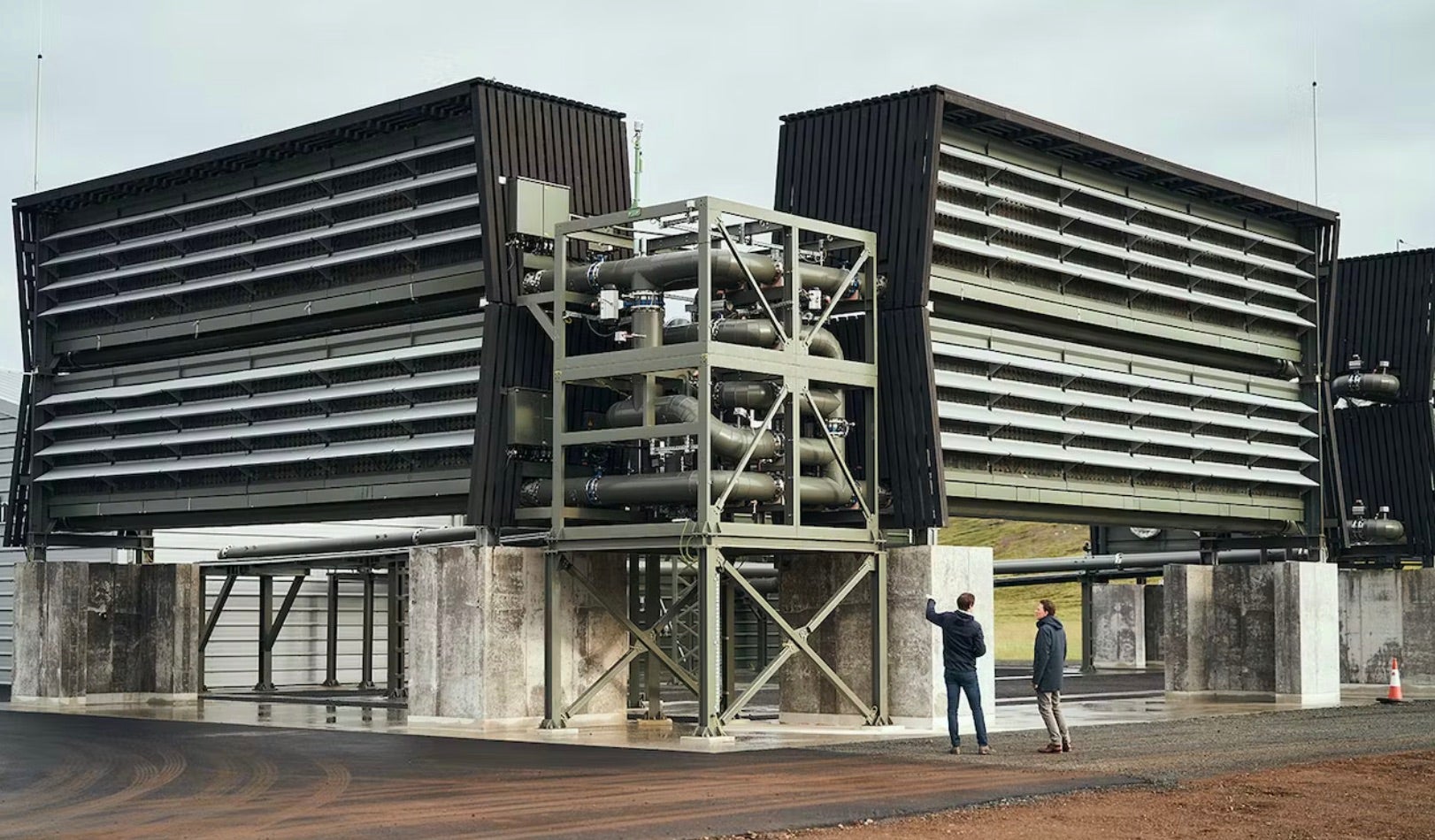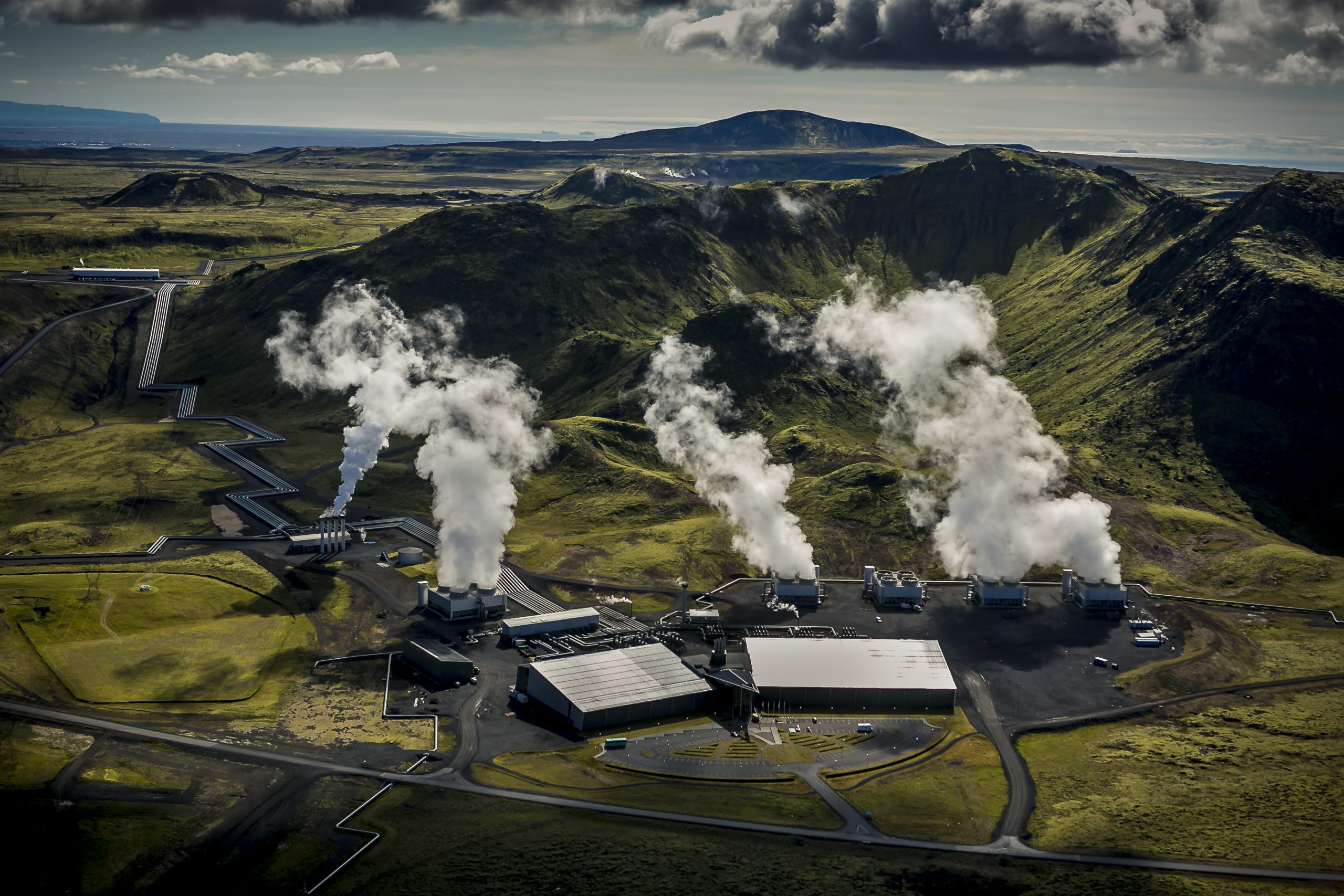
The Bezos Earth Fund and RMI recently released a comprehensive roadmap outlining how to scale technological greenhouse gas removal (GHGR) to 10 billion tonnes of CO₂ equivalent (CO₂e) annually by 2050.
This ambitious plan highlights the critical role engineered carbon dioxide removal (CDR) technologies will play in achieving global climate goals.
The report emphasizes how the voluntary carbon market (VCM) can support this scale-up by driving demand and enabling large-scale deployment.
>> RELATED: This Young Start-Up Has A Clever Strategy For Local CDR And Storage

Addressing the Climate Challenge with CDR
Emissions Reductions Alone Won’t Cut It
The roadmap draws attention to findings from the Intergovernmental Panel on Climate Change (IPCC) that CDR is unavoidable for reaching net-zero goals and limiting global warming to 1.5°C.
Even with advancements in renewable energy, electrification, and efficiency, emissions reductions alone won’t meet the urgency of climate targets.
CDR is essential for addressing the remaining emissions and reversing excess CO₂ in the atmosphere.
Scaling at an Unprecedented Rate
The challenge is enormous. Currently, GHGR technologies remove less than 1 million tonnes of CO₂ annually.
To meet the 10 billion tonne target by 2050, removal capacity needs to increase 10,000-fold—a feat unparalleled in history.
The roadmap describes this as a critical industrial expansion to be achieved in just 25 years, emphasizing the urgency and scale required for success.
A Phased Approach to Deployment
To reach this ambitious target, the roadmap outlines a structured three-phase plan:
- Emergence (2024–2030): Focus on foundational technologies and infrastructure, aiming for 285 million tonnes removed annually by 2030.
- Adoption (2030–2040): Scale to gigatonne-level removals, targeting 4.5 billion tonnes annually by 2040.
- Expansion (2040–2050): Sustain rapid growth, adding 500–800 million tonnes annually to hit the 10 billion tonne target by 2050.

>> In Other News: Canadian Natural Resources Sets $4.2 Billion Budget For 2025, Targets 12% Production Growth
Spotlight on Priority Technologies
The roadmap prioritizes durable, scalable GHGR solutions, including direct air capture (DAC), enhanced weathering, and ocean alkalinity enhancement.
Nature-based solutions, while valuable, are excluded from the primary focus due to durability concerns.
Achieving this scale will also require addressing uncertainties around costs, resource constraints, public perception, and policy gaps.
“Emission reductions and nature-based solutions are vital but insufficient; engineered solutions must scale rapidly to close the gap,” states the Bezos Earth Fund.
Recommendations for Achieving the Vision
Investment in Research and Development
Accelerating innovation is a cornerstone of the roadmap. This includes funding R&D for emerging technologies like DAC, removal of non-CO₂ greenhouse gases such as methane and nitrous oxide, and advancements in efficiency.
Establishing robust measurement, reporting, and verification (MRV) systems is also essential for ensuring the credibility of removals.
Building Market Demand
The roadmap stresses the importance of both voluntary and compliance carbon markets in driving demand.
These markets provide early-stage revenue streams for GHGR projects, which are critical for scaling technologies and sustaining long-term deployment.
Engaging Communities
The report emphasizes equity and environmental justice as central to CDR deployment.
Early and transparent engagement with local communities is key to building trust and preventing resistance. Projects that align with community priorities will stand a better chance of long-term success.
Policy and Financial Support
Supportive policy measures—like subsidies, tax credits, and procurement mandates—are critical to incentivize adoption.
Integrating CDR into regulatory systems, such as the EU Emissions Trading System (ETS), could stabilize demand and attract investment.
Leading the Charge: Energy Companies and Market Expansion
The Role of Energy Companies
Energy companies like Occidental Petroleum are emerging as key players in scaling CDR.
Occidental’s subsidiary, 1PointFive, is set to launch the world’s largest DAC facility in 2025, capable of capturing 500,000 tonnes of CO₂ annually.
By leveraging their infrastructure and expertise, energy companies can drive faster deployment and cost reductions.
The Importance of Voluntary Carbon Markets
The roadmap highlights the voluntary carbon market’s potential to bridge funding gaps while regulatory support builds.
However, relying solely on VCM might not generate enough demand to achieve the required scale.
Expanding compliance markets globally and integrating CDR into these systems will be necessary for consistent growth.
“Scaling carbon removal requires balancing rapid technological development with equitable and community-centered implementation,” states RMI.
Policy Uncertainty and Risks
The roadmap recognizes the risks posed by political shifts, especially in the United States.
While the Department of Energy has been a major funder of DAC technologies—allocating over $1 billion to projects like those from Occidental and Carbon Engineering—future funding is uncertain.
Political priorities can impact subsidies, tax credits, and overall investment, slowing progress on scaling CDR.
In addition, stronger international policy frameworks are needed to align emissions reduction efforts with large-scale CDR deployment.
Without coordinated global action, CDR could be treated as a license to delay decarbonization, undermining climate goals.
A Path Forward
The Bezos Earth Fund and RMI’s roadmap sets a bold vision for scaling GHGR technologies, acknowledging both the significant challenges and immense opportunities.
Achieving the roadmap’s targets will require collaboration across industries, governments, and communities.
With consistent investment and supportive policies, the transformative potential of CDR technologies can be realized, driving us closer to a net-zero future.
For the full report, check out the Bezos Earth Fund and RMI’s Roadmap to Scaling CDR.
Subscribe to the newsletter
Daily decarbonization data and news delivered to your inbox
Follow the money flow of climate, technology, and energy investments to uncover new opportunities and jobs.
Companies
Latest issues
-
Can One Truck Fix Hydrogen’s Biggest Problem?
Inside This Issue 🚛 Alberta's Shared Truck Model Could Crack Hydrogen Adoption ✈️ ZeroAvia Completes Financing Round 🌾 Frontier And NULIFE Scale New Biowaste Carbon Removal Approach 🔥 WAGABOX® Of ...
-
North America’s Carbon Removal Year in Review: Winners, Losers, Surprises
Inside This Issue 🌎 North America's Carbon Removal Year in Review: The Deals, Policies, and Milestones That Shaped 2025 🚢 Hapag-Lloyd And North Sea Container Line Win ZEMBA Second E-Fuel Tender 🪨 ...
-
CCS Just Got Cheaper Than Anyone Expected
Inside This Issue 🧪 Shrinking the CCS Energy Penalty: A Molten Borate Breakthrough Promises Viability for Hard-to-Abate Canadian Oil & Gas 👤 Syntholene Energy Corp Appoints Former CEO of Carbo...
Company Announcements
-
WAGABOX® Of Steuben County, The First WAGABOX® Unit In The US
Deployment / Application Site Location: Bath, Steuben County, New York, USA Site/Plant name: Steuben County Landfill Partners/Clients: Steuben County (landfill owner), Corning Natural Gas (...
-
ZeroAvia Completes Financing Round
KEMBLE, UK and EVERETT, Wash., Dec. 22, 2025 /PRNewswire/ -- ZeroAvia today announced that it has completed a further round of financing, led by Barclays Climate Ventures, Breakthrough Energy Ventu...
-
CHARBONE Delivers Its First Load Of Clean UHP Hydrogen In Ontario
BROSSARD, QC, Dec. 22, 2025 /PRNewswire/ -- CHARBONE CORPORATION (TSXV: CH; OTCQB: CHHYF; FSE: K47) ("CHARBONE" or the "Company"), a North American producer and distributor specializing in clean Ul...
-
SÃO PAULO, BRAZIL, DECEMBER 17, 2025 – InPlanet, a pioneer in tropical Enhanced Rock Weathering (ERW), announced today that it has signed an agreement with Microsoft to remove more than 28,500 tonn...